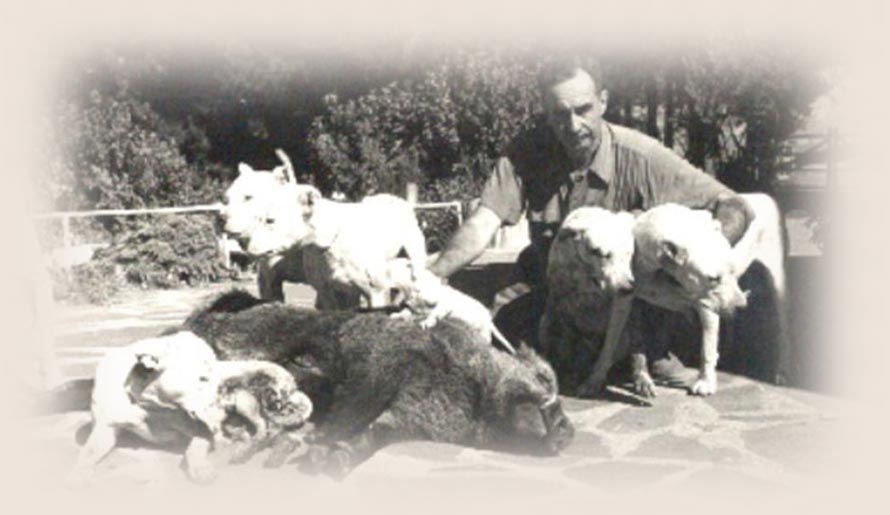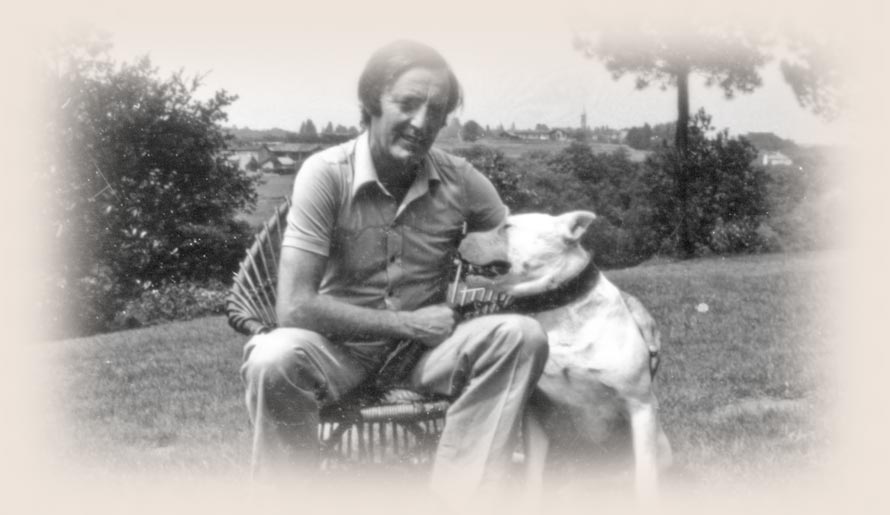About Dogo Argentino

At the beginning of the 20th Century, Cordoba in Argentina was a city with two faces: On one side lived the fervency of what defined the Belle Epoque, a society that was obsessed with spirituality, that made itself feel better by crossing to the other side of the street from the city’s poverty-stricken youth, and that fell asleep to the song of the waltz and mazurka. In short, Cordoba had the appearance of a capital that wanted to show itself to be important in the eyes of the country. On the other side, not far from the first, was a cruder and crueler aspect that had arrived in this land with the active practice of bullfighting, and passed on the predilection for cock-fighting. Later, it pushed to create and prefer another type of fighting, more brutal and emotional: dog fighting.
These two opposite lives co-mingled, and not in different social strata as one might be led to believe, but also in more evolved and unsuspected social circles. In order to accomplish their barbaric purpose, they used mastiff-type dogs in repeated crosses until they developed a type suitable for fighting. This dog came to be considered indigenous and was called Viejo perro de pelea Cordobes (the Old Fighting Dog of Cordoba), precisely because it was already identified withthat area.
These dogs were of a good size, and almost completely white, at times with beige or black spots. Courageous, bold, almost to the point of ferocity, they were untiring and resistant to pain. Wounds did not seem to bother them, allowing them to be victorious in any type of fight. Antonio Nores Martinez, in a brilliant inspiration along with his brother Agustin, conceived of transforming that old fighting dog into one that was more noble and useful – namely, a caza mayor, or catch hound, capable of hunting boar, puma, jaguar, fox and other scourges that invaded the Argentine fields, resulting in huge losses to farmers of the period. To advance their design, they crossed this perro de pelea with breeds that were already fixed in type and were internationally recognized in the dog world, such as the Boxer, Pointer, Pyrenean Mountain Dog, Dogue de Bordeaux, Bulldog, Bull Terrier, Irish Wolfhound and Great Dane, all to try to give agility, strength, size, a good nose, resiliency and intelligence to a unique canine race.

It was truly a dense and difficult cocktail, when one stops to think of the fact they were bringing together Molosser-type dogs with other morphological types. However, one should not forget that even if these were established breeds, they were less evolved and extreme than our modern dogs, in the sense that the breeds were distinct but not as typey as the dogs of today.
I think it is very important to understand the fundamental characteristics of this new breed referred to in Nores Martinez’ famous speech presenting the dogo he held to the Buenos Aires hunting club in 1947. The first quality the dog had to have was silence on the hunt, so as to not be heard by its prey. Second, the dog had to be a good scenter who could follow the trail of the prey without putting his nose to the ground, but capable of air-scenting in the manner of a Pointer. The third quality was agility, resulting in a dog who was very explosive and agile in his movement, without becoming too heavy a molossoid type. The fourth quality had to be medium size, in the sense of not being a giant, nor a dog that was too small or too light. Finally, the dog had to be a good guardian – one who defends the things and people he loves. These few concepts expressed by the creator of the breed set forth its basic characteristics.

The first person to introduce the Dogo to Italy was Giuseppe Citterio of Carate Brianza. In the 1970s, he imported the first dogs, with the hope of breeding them among the green hills of Brianza. Memorable among his dogs was the stud Indio de Chubut, who became the first Italian conformation champion and who came directly from the kennel of Nores Martinez. Those were the years of terrorism and kidnappings, a time in which the Borghese society was in a state of intense fear. The Dogo was introduced in Italy as perhaps the last resort created in the laboratory against the proletarian violence of the day. Fortunately, that period is now water under the bridge, and today the Dogo Argentino is recognized for what he truly is: A loyal companion, eclectic and versatile, who is ready to sacrifice his life to defend the people and things he holds dear.
 STANDARD FCI STANDARD FCIN° 292 del 10.11.2011 |
 STANDARD FCI STANDARD FCIN° 292 del 29.01.1999 |
 STANDARD FCI STANDARD FCIN° 292 del 31/7/1973 |
 DACI
REFRESHER VIDEO CLASS DACI
REFRESHER VIDEO CLASS |




